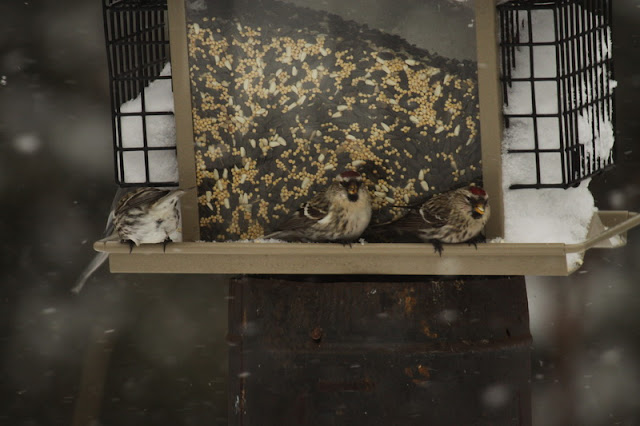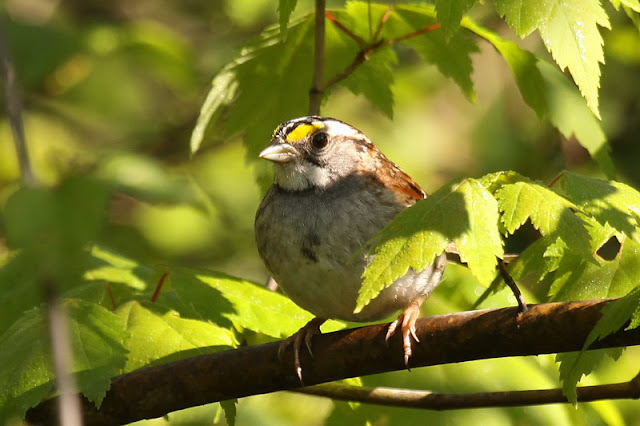When I began birding 30 years ago, there were limited choices in field guides. There were a few guides which used paintings (e.g. Peterson, Golden) and a couple which used photographs (e.g. Audubon). I opted for the guides with paintings; it is what the experts recommended.
The popularity of bird watching as a hobby has exploded in the last 30 years. Paralleling that explosion has been an explosion in products and publications aimed at the bird watchers. There has also been a revolution in the quality, scope, and design of everything seeking to tap the birding market. The best binoculars of 30 years ago, for example, would be rated average today.
For 20 years, I cut my birding teeth with the Golden guide. My worn copy is now stuck in a back corner of the book shelf, a nostalgic reminder of youth.
Sibley revolutionized the Field Guide in 2000; multiple paintings conveyed the visual impressions, and included different ages, seasonal plumage, flight; the paintings were accompanied with succinct descriptions.
In the same year, Kaufman dealt a significant blow to the long prejudice against photographic guides. Digitally edited photographs, simple organization, and vivid descriptions pinpointed field marks, and described habits, habitats, and voice. When I factored in the size of Kaufman’s guide - it fit easily into the back pocket of my blue jeans - it became my favored field guide for many years.
There is no perfect field guide, and no perfect bird identification aid. But there is a tremendous market and that has inspired talented birders, gifted writers, creative designers, and market savvy publishers. They have combined to produce resources that can help bird watchers learn their birds, sort through the complexities, become competent in the field, and nurture their background and knowledge.
Among the creative endeavors is Pete Dunne’s “Field Guide;” it has no illustrations. It is a rocking chair resource for the evening before or after a day in the field.
Specialty guides focusing on a subset of birds (shorebirds, raptors, sparrows) are moving from the realm of the dull pedantry that can only excite the fussiest of the experts, to books that are helpful, useful, and practical to the broader birding population. Some of these are guides employ photographs.
“The Shorebird Guide” (O’Brien, et al, 2006) is one of the most original and useful. With multiple photographs for each species, each shorebird is shown in habitat and with other shorebirds, allowing for side by side comparison of size, shape, and plumage. It is almost as though you were shorebirding with a shorebird expert at your elbow.
I just received a gift of the specialty guide,
“Waterfowl of Eastern North America.” It not only is excellent for individual species, but also contains a section of “Comparisons.” For example, there is a page with photographs of 9 female dabbling ducks, and a chart on the facing page describing slope of forehead, beak size and color, face pattern, leg color, and other. Useful!
But to repeat, no field guide is perfect. If you are only interested in the birds in your backyard, then a “backyard guide” is probably best, since it will focus only the birds most likely to use feeders and save you from getting too confused. If you are going to the next step, actively birding in different habitats, then you need one guide for the field, and two or three additional guides at home, or in the back seat, that you can consult for more difficult identifications, to learn the many variations within species, and to garner information, ID tips, and comparisons.
In the past, for a complete field guide, I have recommended Sibley, Kaufman, and National Geographic. For the first time, I will also recommend a photographic guide.
“
The Stokes Field Guide to the Birds of North America” (2010) is described as the biggest, most colorful, most useful identification guide to birds ever produced. It weighs in at 3 pounds, and so presents certain difficulties when birding in the field. But photographs are superb; they are clear, sharp, and useful. They almost always portray what you will see in the field. The text describes the seasonal, age, and sex differences which are evident in the photographs. For most species, there are four to six photographs; some species, such as the gulls, have many more photographs to show the many variations that occur in seasons and ages. The photographs also show the birds from different angles, thus conveying the shape and profile, a highly useful aid to improving one’s skills in the field.
I am currently engaged in an exercise on sparrows, and other little brown jobs. So I turned to the section in the Stokes guide on the sparrows. Turning the pages is a reminder that there is no substitute for careful observation. Superficially, the birds look similar. But they have included many variations for many species. On my blog I recently posted a photograph of a very young Chipping Sparrow, and identified it as such. Then I began to study it more closely, and doubts crept in. Stokes came to the rescure. One of the six Chipping Sparrow photos included a heavily streaked juvenile Chippy. Thank you.

So, which guide do I carry with me when I am out birding. For difficult Ids, I keep a couple of guides in the car, changing them from time to time. But I don’t carry a printed guide when I am birding. I carry an iPod Touch with several bird guide applications. It is small. It is light, and with just a few touches I can get help with what is still the most difficult part of birding for me - bird songs and bird calls. They are there is multiple and easily accessible forms.
Last January, I did an overview of electronic applications for bird watchers. The changes, improvement, and upgrades to these “apps” are many. I am comfortable with the new technologies, but not obsessive about their use, or about having the latest gizmo. However, I have had over a full year of birding with my iPod applications, and I find it very useful, although not a replacement for the guides in the car or home on the shelf. None of the applications are expensive, so you won’t be out much money if you buy them all.
I have found that
iBird Pro is the best designed application, and packed with information. One of the most useful features is the quickly accessible lists of similar species (quicker even than thumbing the pages of a book). Even more useful is the list of similar voice/song. You can quickly hear and compare different species, and often multiple songs of each species. As the photo resources of this application grow, it will be even more useful in the field.
Late in the summer I added “
The Sibley eGuide to the Birds of North America.” With all of the illustrations from the Sibley guide, this app puts “big” Sibley in your breast pocket. Its touch design is somewhat awkward, and it does not have the “similar” features of iBird Pro, or the wealth of additional material, but otherwise it is an excellent adaptation.
The disadvantage of these applications with my iPod is that I cannot run more than one app at a time, and toggle back and forth. I consult one, then have to load the second, then go back and reload the first, and so on. Life is tough.
But birding is good. Even in the winter those little feather balls outside of the window entertain and amaze. I watch them while browsing one of the armchair guides during these indoor days.


























